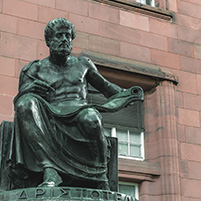TOPOGRAFIA, DEMOGRAFIA E (DIS)UNITÀ POLITICA DELLA CITTÀ: CONSIDERAZIONI SU ARIST. <em>POL.</em> 5.3.1303B 7-12*
DOI:
https://doi.org/10.4081/lettere.2021.780Abstract
The aim of this article is to offer a comprehensive analysis of Aristotle’s reflection on the stasis dia tous topous, i.e. the instance in which civic conflict is explained as a consequence of a particular layout of the territory that impedes the political unity of the polis. We first analyse the available data on the episodes of stasis that involve the cities in Aristotle’s example, in order to estimate the degree of congruence between each episode of stasis occurred in these cities and Aristotle’s passage on the stasis dia tous topous. Second, we focus on the example concerning Athens, which, it is argued, illustrates the socio-political heterogeneity of a polis, which culminates in the correspondence between residence and political orientation. Hence there is no reason to see in the example of Athens a precise reference to an actual civil war but rather to some cornerstones of Aristotle’s thought, i.e. the connection between the fleet and democracy, and the coincidence between individual lifestyle and membership in a certain socio-political group.
Downloads


